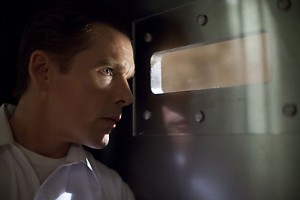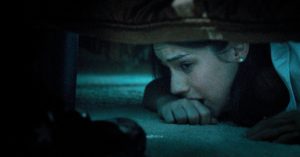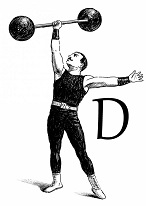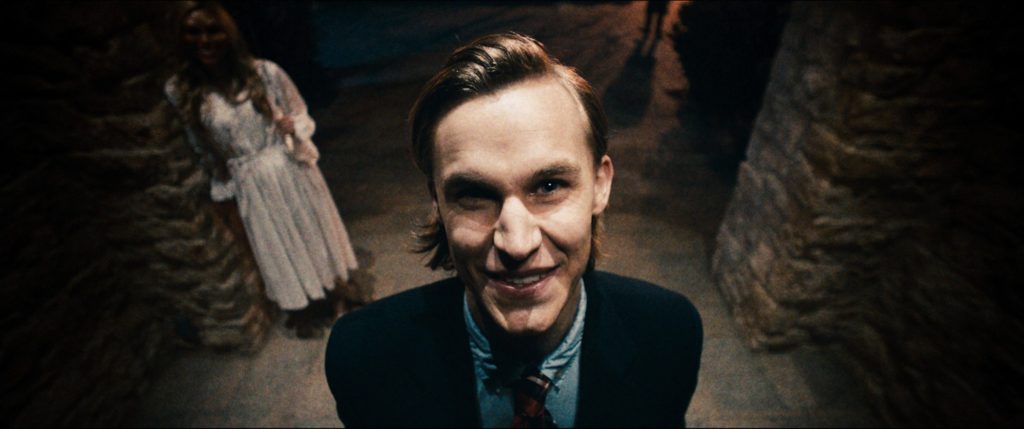2012-13 seems to be a return to America’s fascination with the cautionary tale. Last March saw the release of the futuristic “The Hunger Games,” which pitted 24 teenagers against each other in a fight to the death, as well as renewed interest in the 2000 Japanese film “Battle Royale,” where a cruel government forces ninth graders to kill each other. Both films seemed to ooze parables from a single literary source, “The Lottery,” a 1948 short story whereby a town selects one victim each year by lottery to be stoned to death in the town square as part of a crude population control strategy.
It is in this vein that the 2013 film “The Purge” hit theatres this month, attempting to entertain audiences while underscoring the violence that lies in America’s shadows. However, whether too little too late or simply not enough, the film’s interesting premise turns out to be little more than an abject failure when played out on-screen.
“The Purge” centers on a single, white, well-to-do American family on the night of March 21 – designated by America’s new rulers as a night of lawlessness where all crime, even murder, is legal for 12 hours. Ethan Hawke plays James Sandin, an executive in a security company who is doing extremely well with the abundance of security systems he sells to rich neighbors who want protection during each year’s “Purge.”
He is joined by his beautiful wife (Lena Headey), daughter Zoe (Adelaide Kane), and strange yet caring son Charlie (Max Burkholder). With a state of the art security system, the Sandins are prepared for another night of humdrum as countless others – without protection – are hunted and slaughtered outside. However, a tragic turn of events takes place when Charlie disarms the security system to let in a man being hunted by a group of upper class savages, and ends up placing the Sandins in danger as the group threatens their lives to get their victim back.

The most prominent problem with “The Purge” is that it never decides exactly what kind of movie it wants to be. The film, which is billed as a horror movie, focuses much of its early energy on the Marxist tones between the “Haves and the Have Nots,” striking social commentary better left for a more serious film on the matter, and not one which barely scratches the surface of these issues before getting to the gore. Newscasts about whether the “Purge” targets the poor who can’t afford protection are poignant in their observations, yet seem thrown in as little more than an afterthought as they are quickly glossed over and never explored.
The acting in the film is also problematic, with much of the best performances belonging to minor characters. For instance, Adelaide Kane, playing Sandin’s daughter does a fairly competent job playing a character at odds with her father but drawn to him by circumstance, as does Max Burkholder as her morally inclined brother who doesn’t understand the point of the “Purge,” questioning his father many times and ultimately risking his family’s life to save a stranger.
One of the more disappointing aspects with the film is the wasteful use of Ethan Hawke as James Sandin, whose character is painted so incredibly thin that he’s virtually unlikeable for most of the movie. Hawke, who has shown competent and pleasing performances in movies like “Lord of War” and “Training Day” here is choked with a common problem of movies such as this, movies that wrongly assume that a unique movie premise supersedes the need to write an engaging plot and detailed characters. The result is a family that we understand on the surface only, and one we care about so little it’s hard to root for them as strongly as we can only assume Director John DeMonaco wanted us to.
 Some gems come to us during “The Purge,” most notably the acting of Rhys Wakefield, the leader of the murdering hoards who threaten the Sandins, who creates a sinister villain who sends shivers up our spines. One part Sid Vicious, one part Harvard grad, his cold, calculating dialogue and purposeful actions let us know right away he is a force to be reckoned with. Further, the film does manage to create captivating ambiance and atmosphere in the right places. Even though the entire film takes place basically in the Sandin’s house a la “Panic Room,” we are left with the distinct impression that the night of the “Purge” is a decadent and forlorn event better experienced behind locked doors rather than the unforgiving and lawless run of the streets.
Some gems come to us during “The Purge,” most notably the acting of Rhys Wakefield, the leader of the murdering hoards who threaten the Sandins, who creates a sinister villain who sends shivers up our spines. One part Sid Vicious, one part Harvard grad, his cold, calculating dialogue and purposeful actions let us know right away he is a force to be reckoned with. Further, the film does manage to create captivating ambiance and atmosphere in the right places. Even though the entire film takes place basically in the Sandin’s house a la “Panic Room,” we are left with the distinct impression that the night of the “Purge” is a decadent and forlorn event better experienced behind locked doors rather than the unforgiving and lawless run of the streets.
At the end of the day, “The Purge” comes off as an exercise of a movie that should have worked but sadly does not. It had a good idea going for it, and with big name actors like Ethan Hawke, should have been able to surmount the challenges that afflict other movies of its ilk. It’s poignant observations, such as poverty versus affluence and the clear snootiness and racism emitted by key characters, would have made for a wonderful independent film, but for a film served up as standard horror fare comes off as a cold and distracting. Is violence a ‘normal’ part of every person that nights like the “Purge” are necessary to act out in order to lower crime in our society? This observation and cautionary question is asked as little more than a half-whispered thought. Perhaps it is and perhaps it is not. Unfortunately, it would have taken a decidedly better film than “The Purge” to provide an answer.
– by Mark Ziobro


